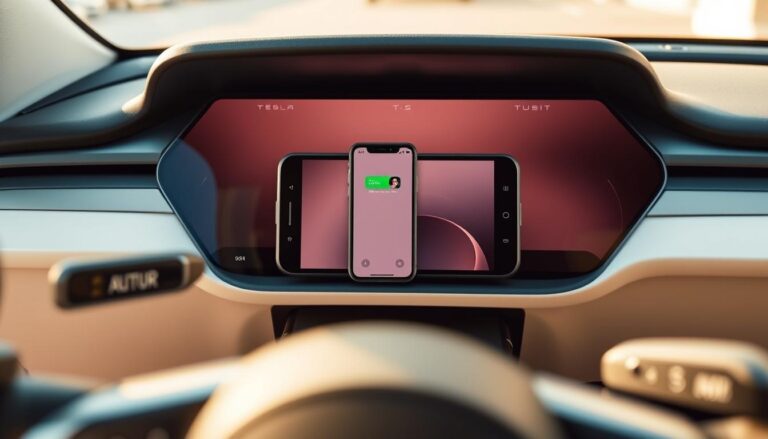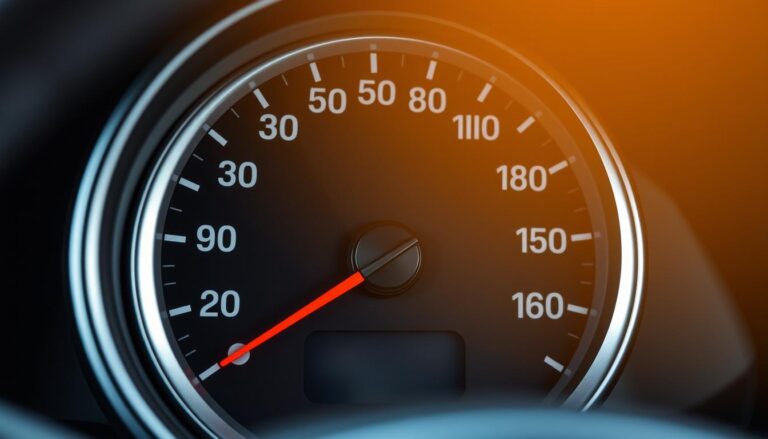The process of accessing your Tesla dashcam footage is remarkably straightforward, requiring only a few elementary steps. The TeslaCam feature, integral to this functionality, enables the recording and subsequent saving of footage. This capability is invaluable, serving as a critical piece of evidence in the aftermath of any incident.
Grasping the methodology behind accessing this footage is paramount for access dashcam footage with optimal efficiency. This comprehensive guide aims to elucidate the process, ensuring that you can effortlessly retrieve your recordings.
Key Takeaways
- Learn how to access your Tesla’s dashcam recordings.
- Understand the importance of the TeslaCam feature.
- Discover the simple steps to retrieve your dashcam footage.
- Find out how to manage your recordings effectively.
- Gain insights into utilizing your Tesla dashcam efficiently.
Understanding Tesla’s Dashcam Feature
The Tesla Dashcam feature emerges as a pivotal asset for vehicle proprietors, offering a plethora of advantages and functionalities. It empowers drivers to capture, preserve, and scrutinize video segments, thus enriching the driving experience.
How Tesla Dashcam Works
The Tesla Dashcam leverages the vehicle’s external cameras to record footage, which is then stored on a USB drive inserted into the vehicle’s USB port. For comprehensive guidance on configuring the Dashcam, refer to resources such as the Tesla Dashcam setup guide. This feature is capable of capturing a broad spectrum of scenarios, from routine driving to unforeseen events.

Benefits of Using Tesla Dashcam
Utilizing Tesla’s Dashcam feature affords numerous advantages, including the capacity to review and dissect incidents or accidents involving your vehicle. It acts as a deterrent against potential threats and serves as evidence in disputes. Tesla owner and enthusiast, John, aptly summarized its benefits by stating,
“The Dashcam feature has given me peace of mind while driving, knowing that I have a record of any incidents that may occur.”
Further, the Dashcam proves invaluable for monitoring your vehicle when it’s stationary, courtesy of Tesla’s Sentry Mode integration.
Requirements for Using Tesla Dashcam
Before accessing Tesla Dashcam footage, it’s essential to understand the necessary requirements. Ensuring your vehicle meets these criteria is crucial for utilizing the dashcam feature effectively.
Compatible Tesla Models and Software Versions
Tesla’s Dashcam feature is available on most modern Tesla models. It is imperative to verify your vehicle’s software version to ensure compatibility. The feature is supported on Tesla models with software version 2017.50 or later.
USB Drive Requirements and Specifications
A compatible USB drive is necessary for storing dashcam footage. Tesla recommends using a high-quality, high-performance USB drive with a minimum capacity of 64 GB. The USB drive should be formatted to FAT32 to ensure compatibility.

Recommended USB Brands and Models
While any compatible USB drive can be used, certain brands are recommended for their performance and reliability. Top recommended USB brands include SanDisk, Kingston, and Samsung. When choosing a USB drive, consider factors such as storage capacity, read/write speeds, and durability.
Setting Up Your Tesla Dashcam
The initiation of your Tesla Dashcam’s functionality necessitates a meticulous approach, encompassing several pivotal steps. Initially, you must prepare a USB drive, ensuring it meets specific criteria. Subsequently, configure it appropriately within your Tesla, a process that demands precision and attention to detail.
Formatting Your USB Drive Properly
Commencing with the formatting of your USB drive is imperative. Tesla advocates for a USB drive with a minimum capacity of 64 GB, formatted to either FAT32 or exFAT. This prerequisite is essential to guarantee the seamless recording and storage of Dashcam footage.
To format your USB drive effectively, leverage your computer’s native tools. For users of Windows, the Disk Management utility is the preferred method. Mac users, on the other hand, should employ the Disk Utility application to achieve the desired formatting.
Creating the TeslaCam Folder Structure
Following the successful formatting of your USB drive, the subsequent step involves the creation of a specific folder structure. Establish a folder named TeslaCam on the root directory of your USB drive. This designated folder will serve as the repository for your Tesla’s Dashcam recordings.
Installing the USB Drive in Your Tesla
Insert the formatted USB drive into the designated USB port within your Tesla, typically situated in the center console or glove compartment. Confirm that it is securely connected to facilitate recording.
Activating the Dashcam Feature
To activate the Dashcam, navigate to your Tesla’s controls, then to Controls > Safety > Dashcam, and select the option to enable it. An alternative method involves utilizing the Dashcam icon on your vehicle’s screen to manually save recent footage.
| Step | Description |
|---|---|
| 1 | Format USB drive to FAT32 or exFAT |
| 2 | Create TeslaCam folder on USB drive |
| 3 | Insert USB drive into Tesla’s USB port |
| 4 | Enable Dashcam feature through Tesla’s controls |
How to Get Tesla Dashcam Footage Directly From Your Vehicle
The Tesla dashcam feature empowers owners to access and preserve footage directly from their vehicle. This capability is invaluable for incident monitoring on the road or capturing memorable moments during your journey. We will elucidate the steps to retrieve dashcam footage directly from your Tesla in this section.
Using the Dashcam Icon to Save Recent Footage
To preserve recent dashcam footage, the dashcam icon on your Tesla’s touchscreen is utilized. By tapping the icon, the most recent footage is saved to your USB drive. This function is beneficial for capturing unexpected events on the road.
Accessing Sentry Mode Recordings
Sentry Mode, a security feature, employs your Tesla’s cameras to monitor surroundings when the vehicle is parked. To access Sentry Mode recordings, navigate to the ‘Sentry’ or ‘Dashcam’ section on your Tesla’s touchscreen, contingent upon your vehicle’s software version. Here, you can peruse the recordings saved on your USB drive.
Viewing Saved Clips on Your Tesla Screen
Once clips are saved to your USB drive, they can be viewed directly on your Tesla’s screen. Navigate to the ‘Dashcam’ or ‘Sentry’ section, and select the clip you wish to view. This enables you to review the footage without the necessity of removing the USB drive.
Accessing Dashcam Footage on External Devices
The process of accessing Tesla dashcam footage on external devices is remarkably straightforward, necessitating only a few elementary steps. Initially, one must safely extract the USB drive from the Tesla.
Safely Ejecting and Retrieving the USB Drive
Ensuring data integrity is paramount; thus, it is crucial to eject the USB drive from the Tesla’s system correctly before its removal. This can be achieved by accessing the “Safety & Security” settings on the Tesla’s touchscreen, followed by the selection of “Eject USB Drive.”
Understanding Tesla’s Video File Structure
The Tesla’s dashcam footage is stored within a predefined folder structure on the USB drive. This structure, organized chronologically, facilitates the effortless identification of specific recordings.
Viewing Footage on Windows Computers
For those utilizing Windows computers, the process of viewing TeslaCam footage is remarkably simple. One merely needs to insert the USB drive, navigate to the “TeslaCam” folder, and then open the desired video files using a compatible media player.
Viewing Footage on Mac Computers
Mac users can also access TeslaCam footage by inserting the USB drive and accessing the “TeslaCam” folder. Most contemporary Macs are equipped with the capability to play these video files using their built-in media player.
Using Mobile Devices to Access Footage
Transferring TeslaCam files to mobile devices is feasible through the use of a USB OTG adapter or by uploading the files to a cloud storage service. This allows for the viewing of footage on smartphones or tablets.
| Device | Method to View Footage |
|---|---|
| Windows Computer | Insert USB drive, navigate to TeslaCam folder |
| Mac Computer | Insert USB drive, navigate to TeslaCam folder |
| Mobile Device | Use USB OTG adapter or cloud storage |
Using Third-Party Applications for Tesla Footage
Exploring beyond Tesla’s native interface, numerous third-party applications unveil enhanced functionalities for managing dashcam footage. These tools augment the Tesla dashcam’s capabilities, granting users greater flexibility and control over their recordings.
Popular Tesla Dashcam Viewers and Their Features
Several dashcam viewers stand out, each boasting unique attributes. Notable among these are applications facilitating effortless video editing, GPS tracking, and the creation of clips for social media dissemination. For example, some viewers accommodate multiple video formats, streamlining the process of managing and sharing footage across various devices.
Mobile Apps for Tesla Dashcam Footage
Mobile applications tailored for Tesla dashcam footage offer the advantage of accessing recordings on the move. These apps frequently incorporate features such as remote viewing, event-based notifications, and cloud connectivity for effortless backup and sharing.
Cloud Storage Options for Tesla Footage
Cloud storage emerges as a critical factor for Tesla owners desiring secure storage of their dashcam footage. Multiple cloud services present scalable storage solutions, automatic backups, and universal access to files from any device. This ensures that invaluable footage remains accessible at all times.
Troubleshooting Common Tesla Dashcam Issues
Users of Tesla dashcam systems frequently encounter problems that can be rectified through straightforward troubleshooting methodologies. Familiarity with these prevalent issues and their resolutions is crucial for maintaining the optimal performance of your dashcam.
Dashcam Not Recording or Saving Properly
When the Tesla dashcam fails to record or save footage, verify that the USB drive is correctly inserted and possesses adequate storage capacity. Confirm that the USB drive is formatted appropriately and that the TeslaCam folder is established on the drive. In the event of continued malfunctions, consider employing a different USB drive or reformatting the current one.
Corrupted or Missing Files
Corrupted or absent files often stem from the improper ejection of the USB drive or software-related complications. To address this, attempt to re-access the footage following the safe removal of the USB drive. If files continue to be corrupted, contemplate reformatting the drive or updating your Tesla’s software.
USB Drive Performance Problems
Performance issues with USB drives can impede the functionality of your dashcam. Opt for a high-quality USB drive that adheres to Tesla’s standards, and steer clear of drives with limited storage capacity or sluggish write speeds.
Software Update Issues Affecting Dashcam
Software updates can sometimes disrupt the operation of your dashcam. If you encounter problems post-update, ensure that your Tesla is operating with the most current software version and that the dashcam feature is activated in the settings.
Conclusion
The process of accessing Tesla dashcam footage is remarkably straightforward, provided the TeslaCam system has been properly set up. Adherence to the steps detailed in this guide facilitates effortless retrieval and viewing of footage from your Tesla vehicle.
Utilizing TeslaCam ensures the security of your vehicle and provides evidence in the event of an incident. This feature is invaluable for Tesla owners, offering a sense of security and an additional layer of protection.
To fully leverage the capabilities of TeslaCam, it is imperative to maintain regular software updates for your Tesla vehicle and employ a compatible USB drive. Such actions guarantee the optimal functioning of this advanced feature, thus enriching your overall Tesla ownership experience.
Grasping the intricacies of accessing and managing your Tesla dashcam footage empowers you to maximize the potential of your vehicle’s safety and security features.
FAQ
What are the compatible Tesla models for using the Dashcam feature?
The Dashcam feature is accessible on a broad spectrum of Tesla models, encompassing the Model S, Model 3, Model X, and Model Y. This accessibility is contingent upon the vehicle’s software version meeting the requisite standards.
What is the recommended USB drive for Tesla Dashcam?
Tesla advocates for the utilization of a premium USB drive, characterized by a minimum write speed of 4MB/s and a storage capacity of at least 64GB. SanDisk and Western Digital are frequently cited as exemplary choices.
How do I format my USB drive for Tesla Dashcam?
To prepare your USB drive for Tesla Dashcam functionality, first connect it to a computer. Then, format it to FAT32. It is imperative to ensure the drive is devoid of data, as the formatting process will eradicate all existing content.
Can I view Tesla Dashcam footage on my mobile device?
Affirmatively, Tesla Dashcam footage can be accessed on mobile devices. This can be achieved by transferring the video files from the USB drive to your device or by leveraging third-party applications that are compatible with Tesla Dashcam footage.
Why is my Tesla Dashcam not recording or saving footage properly?
Issues such as a malfunctioning or incompatible USB drive, insufficient storage capacity, or software malfunctions can impede proper functionality. It is advisable to verify the USB drive’s compatibility and ensure that your Tesla’s software is current.
How do I access Sentry Mode recordings on my Tesla?
To access Sentry Mode recordings, initiate the process by invoking the Dashcam icon on your Tesla’s interface. Subsequently, navigate to the Sentry Mode clips stored on your USB drive.
Can I use cloud storage for my Tesla Dashcam footage?
Affirmatively, third-party cloud storage solutions are available for the storage of Tesla Dashcam footage. These services offer an additional layer of security and convenience.
What should I do if my Tesla Dashcam files are corrupted or missing?
In the event of corrupted or missing files, consider re-formatting your USB drive, updating your Tesla’s software, or employing an alternative USB drive. If the issue persists, it is advisable to seek assistance from Tesla support.


